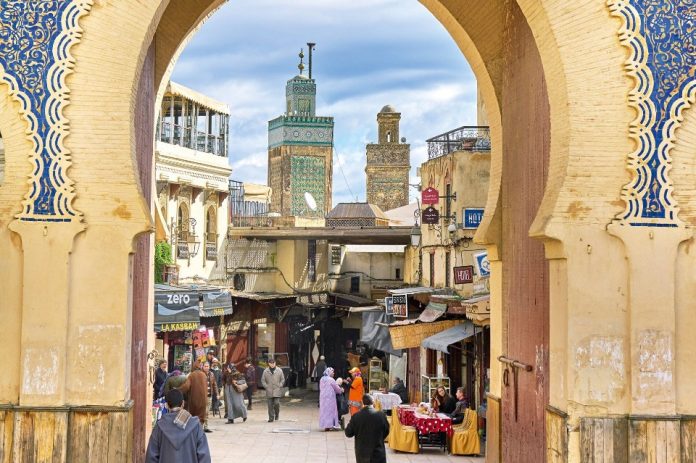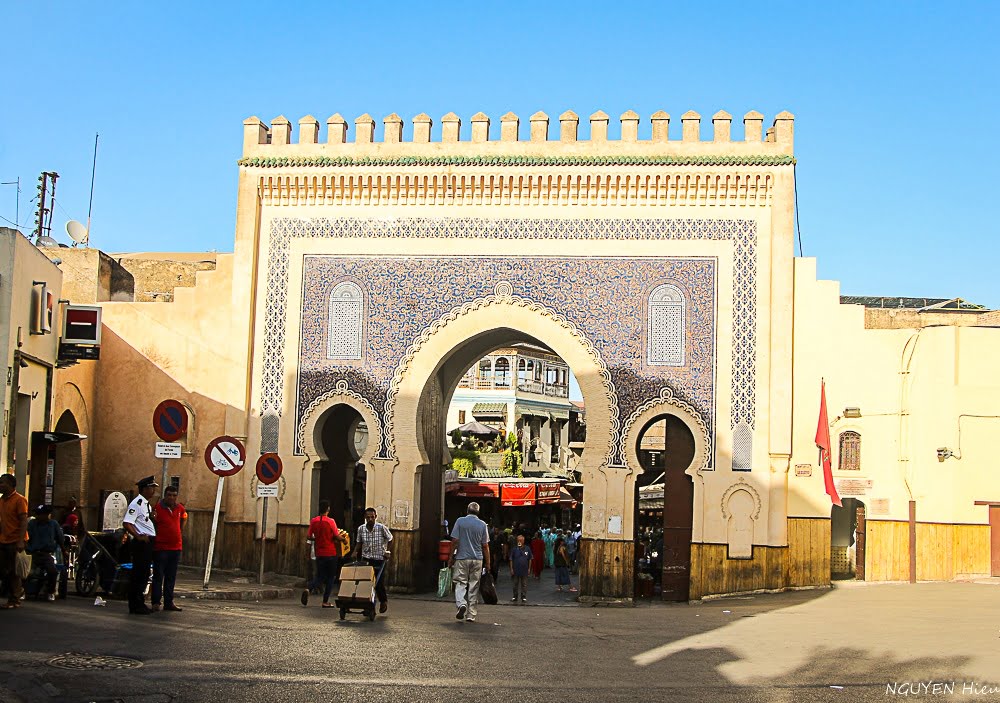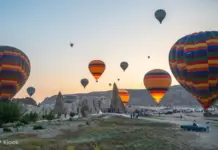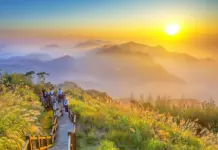Morocco is famous for its royal cities like Fes (Fez), Meknes, Marrakesh and Rabat. Among them, Fez is the oldest and most impressive. The Old Town, also known as the Medina, is a UNESCO World Heritage Site, and it is also the home to the world’s oldest university. In medieval street corners, a wonderland of vibrant colors, lively sounds and fragrances awaits you.
- Morocco 7 days itinerary — How to spend 7 days in Morocco perfectly to visit: Fez, Chefchaouen & Tangier
- What to buy in Morocco? — Top 17+ souvenirs, gifts & best things to buy in Morocco
- Marrakech travel blog — The fullest Marrakech travel guide for first-timers
- Chefchaouen travel guide — The fullest Chefchaouen travel blog & guide for first-timers
- Morocco travel blog — The fullest Morocco travel guide for a budget trip for first-timers
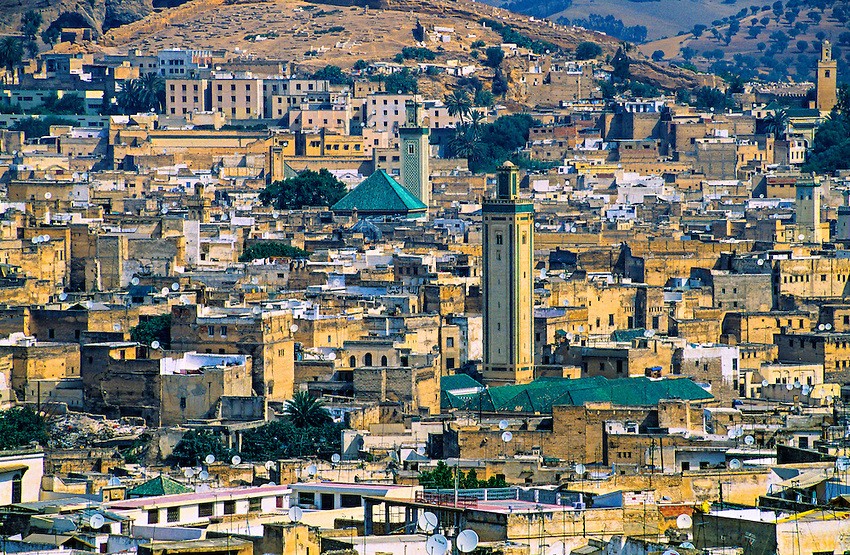
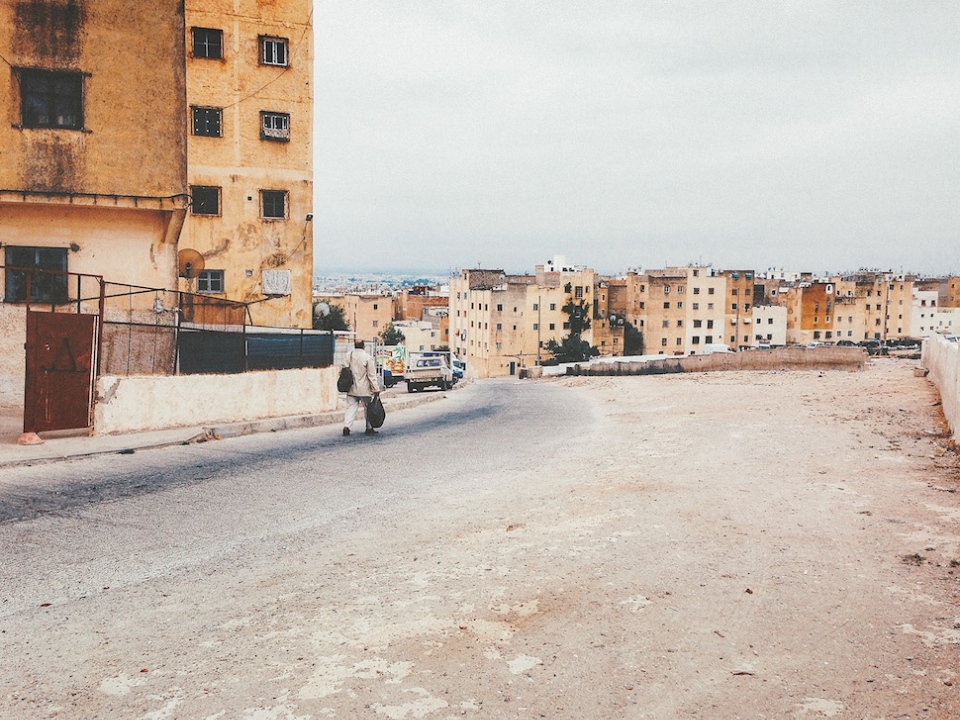
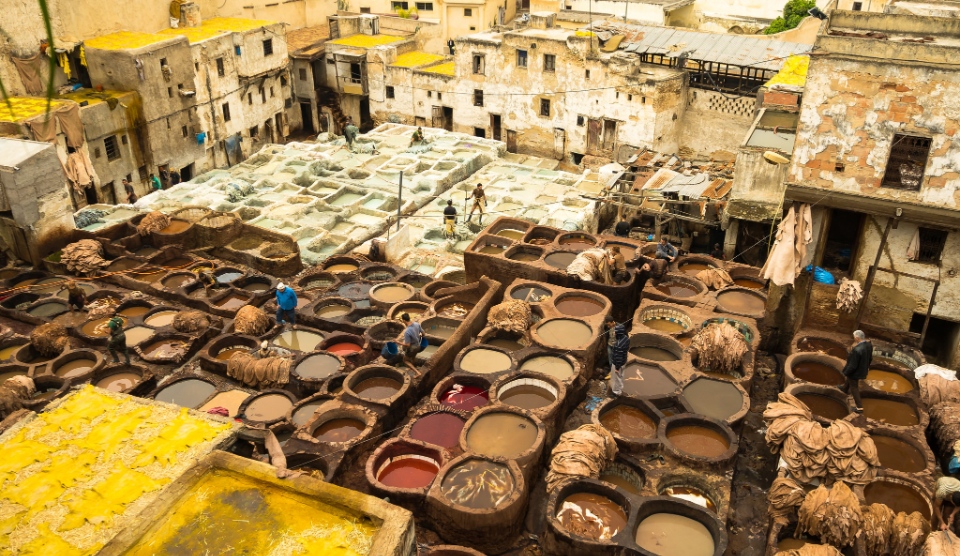
So, is Fes worth visiting, how to visit Fes, what to do in Fes and how to plan a budget trip to Fes for the first-time perfectly? Let’s check out our Fes travel blog (Fes blog, Fez blog) with the fullest Fes travel guide (Fez travel guide, Fez city guide, Fes guide, Fez guide) from how to get to Fes, best places to visit, best time to come, what to eat as well as top things to do in Fes to help you maximize your trip as follows!
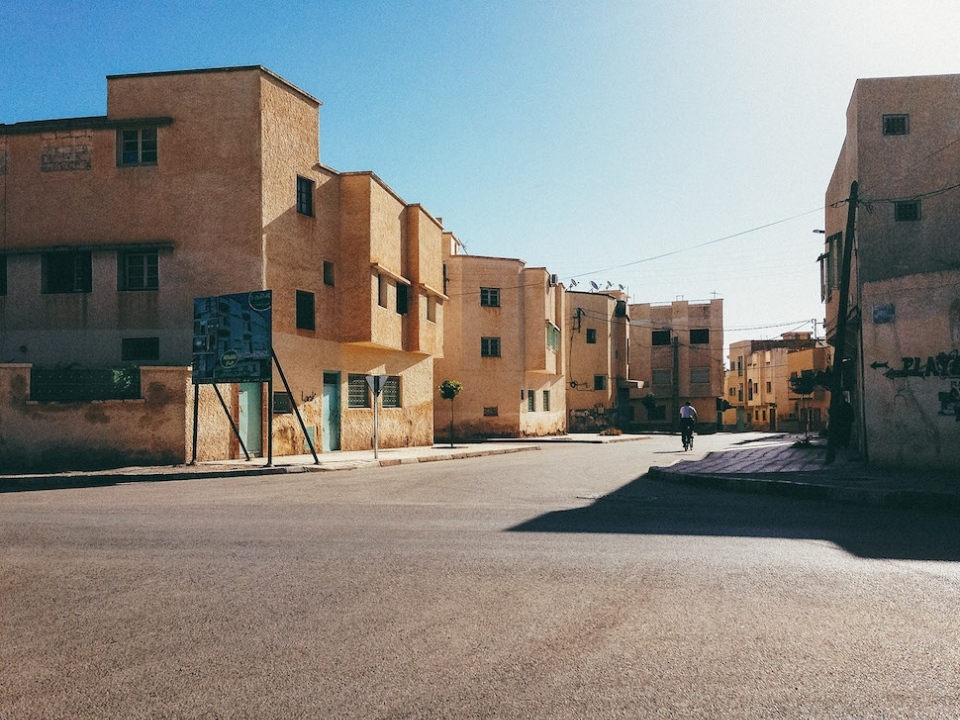
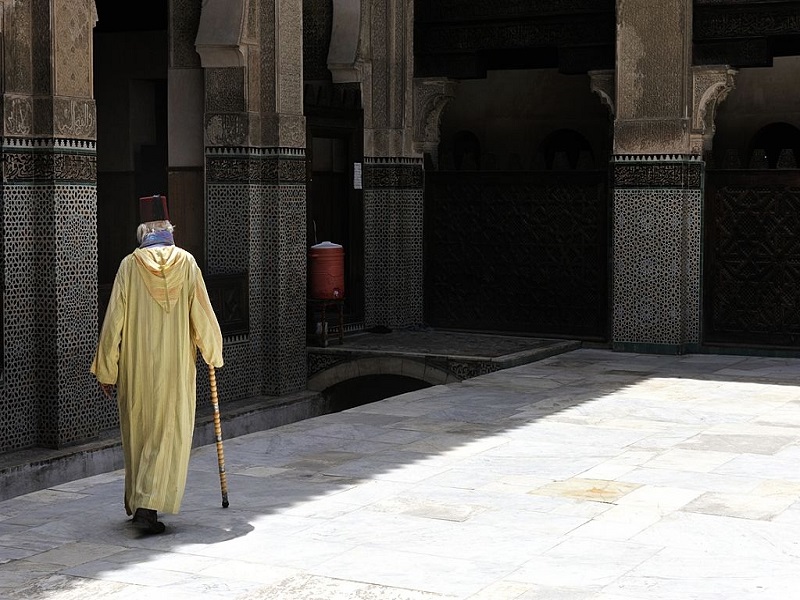
In Morocco, Marrakech is the most developed city in tourism, Casablanca is the economic center, Rabat is the capital, but Fes is probably the most interesting place for those who want to learn about medieval culture.
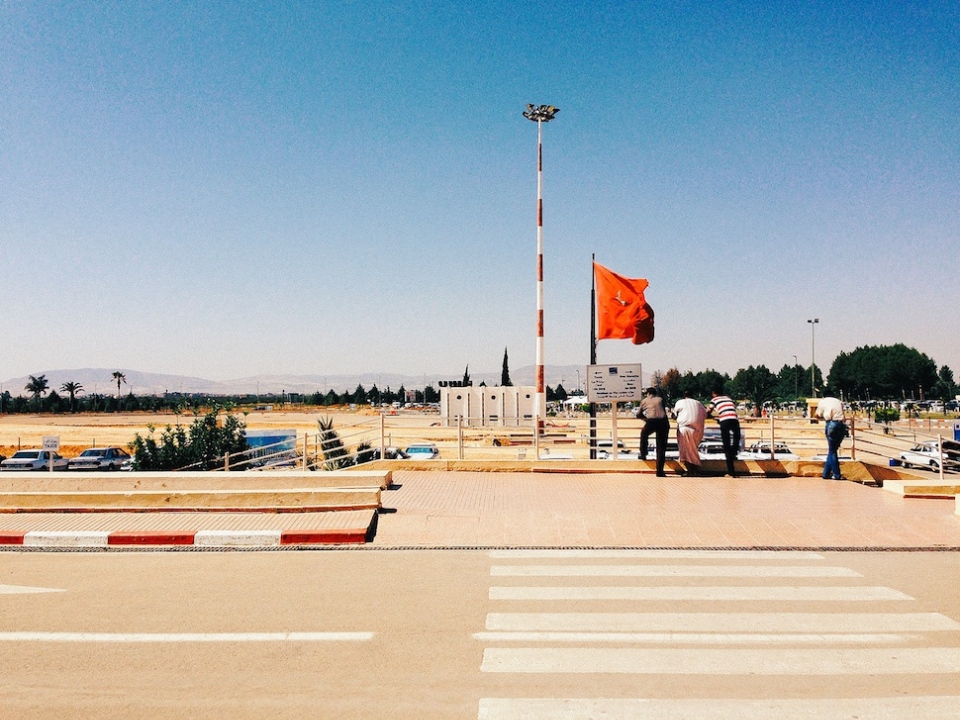
Indeed, without the soda fountains with modern Western logos or the old TV satellite dishes on the roofs, you would feel like you were in a movie set that recreated history thousands of years ago. As the second largest city of Moroccan, city of Fes today has grown beyond the walls built in the 9th century. However, the Arabic medieval style in the streets, the oldest markets in the world are still here.
Overview of Fes (#fes blog)
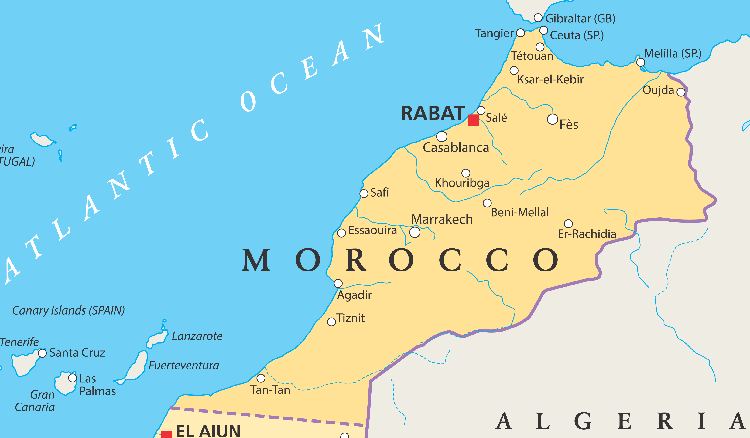
Fez was built in 789 by the Arab king Idris – the founder of the Idrisid dynasty. Since then, it is considered the center of commerce and academic. Fez has been the capital of Morocco for several periods of history, going through its golden age under the rule of the Marinids – who reigned Fez during the 13th and 14th centuries. Many of the Medina’s most famous works (including including islamic schools, palaces and mosques) were built from this glorious period.
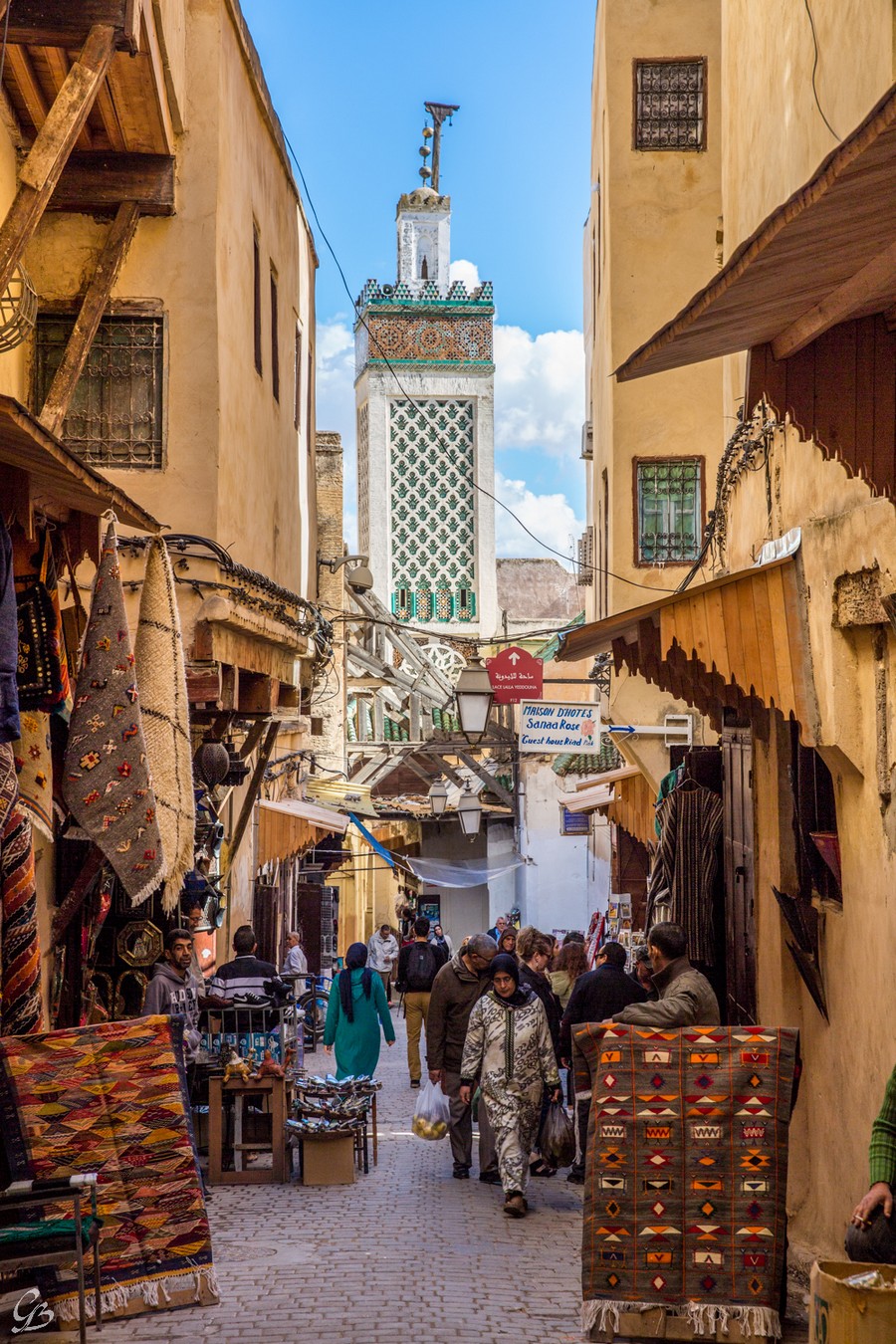
With more than 1300 years of history, until now the city of Fes still retains a lot of historical vestiges from the Arab period, and this place deserves to be an interesting place for tourists who love culture and history and famous islamic architectural works.

Today, the Medina is called Fez-el-Bali (Old Fez), and its antiquity has not faded with time. Hire a guide to take you through the labyrinthine streets, or explore and experience the feeling of being lost in medieval atmosphere. You’ll find plenty of fairgrounds and local craft workshops, ornate fountains, and local hammam baths. Outside the Medina is Fez’s most modern neighborhood, known as Ville Nouvelle. Built by the French, as a completely different world from the old town, it has wide boulevards, modern shops and heavy traffic (the old town is pedestrian only, the prohibited vehicles).
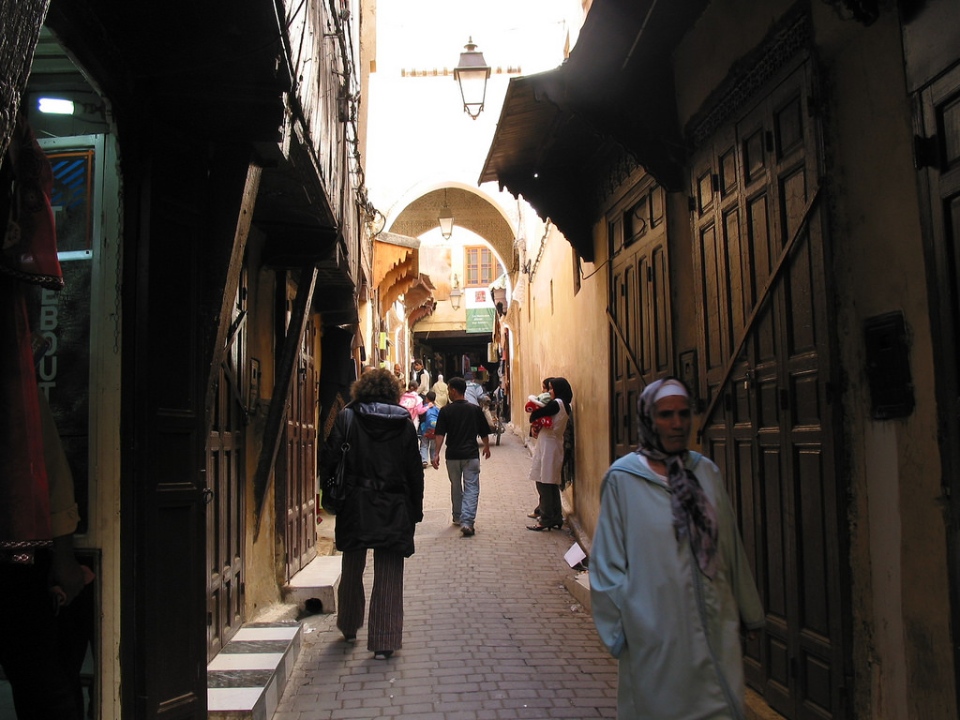
The city of Fes is considered the “Mecca of the West” or “Athens of Africa” with the meaning of the strong development in the past of the city in many aspects. With over 156,000 people living and working in the medina, it is perhaps the largest car-free metropolitan area in the world. Over the centuries, everything modern has been brought into the heart of the Fes El Bali medina, with the exception of motor vehicles, the way people make goods for sale remains the same.
Twice selected as the capital of Morocco through the dynasties has made Fes in the past a prosperous and bustling trading city. It was also thanks to the development of that trade that attracted many people to come here to settle, thereby marking the golden age of this city.
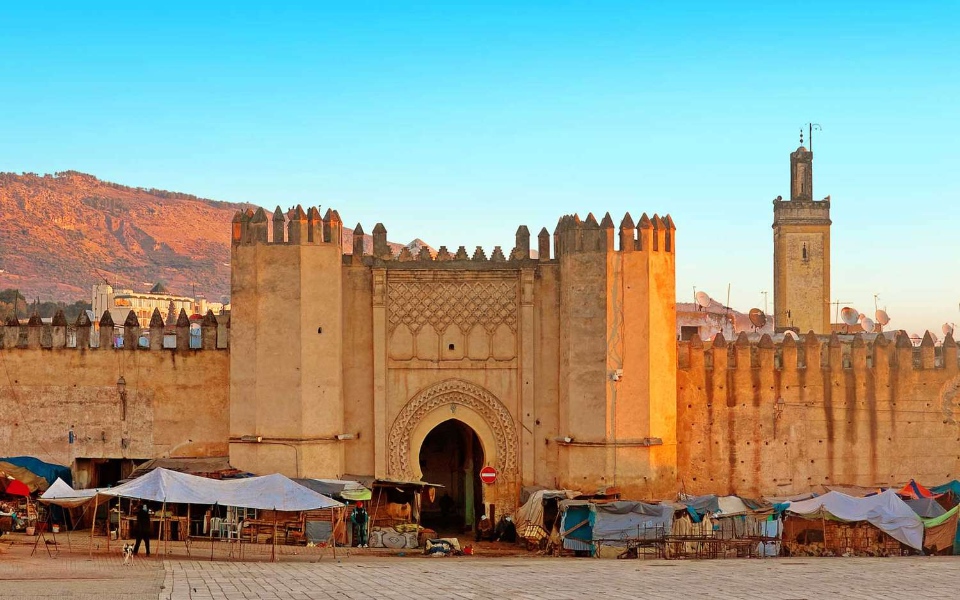
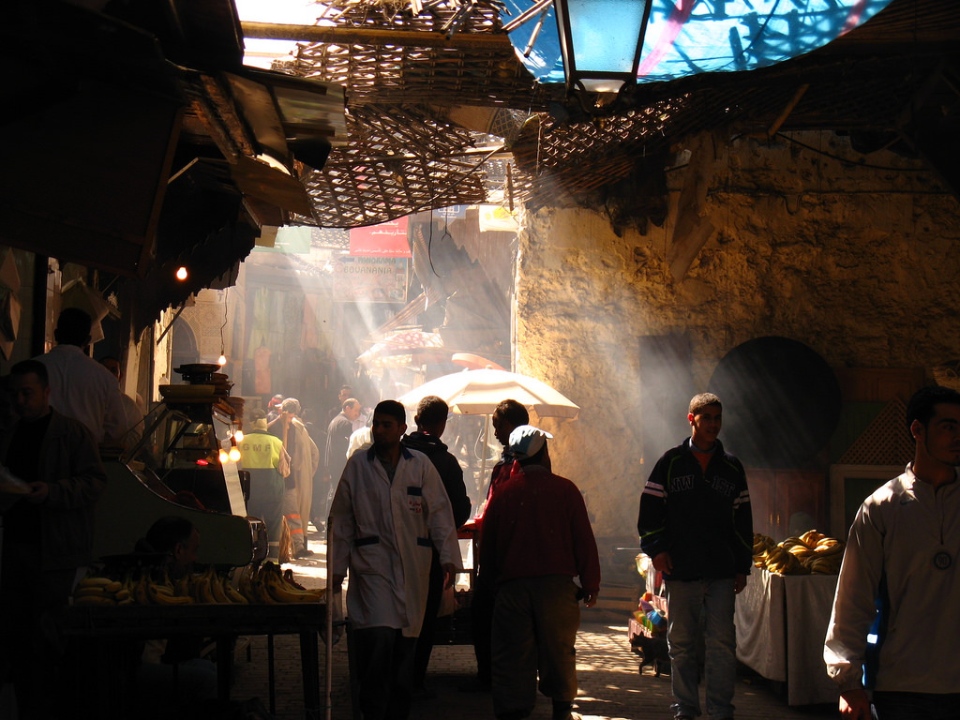
Today’s city of Fès consists of two old quarters (Medina): Fès el-Bali and Fès Jdid, and a new quarter (Ville Nouvelle) built by the French. In particular, the medina Fès el-Bali is listed as a UNESCO heritage site, is the most famous and worth visiting place.
In Arabic, the medina is understood as the old town – a place for people to live and trade and exchange goods for centuries. It is peculiar, in most cities in Morocco, that in the medina all means of transport are prohibited. Therefore, people can only walk in the medina, except in Marrakech.
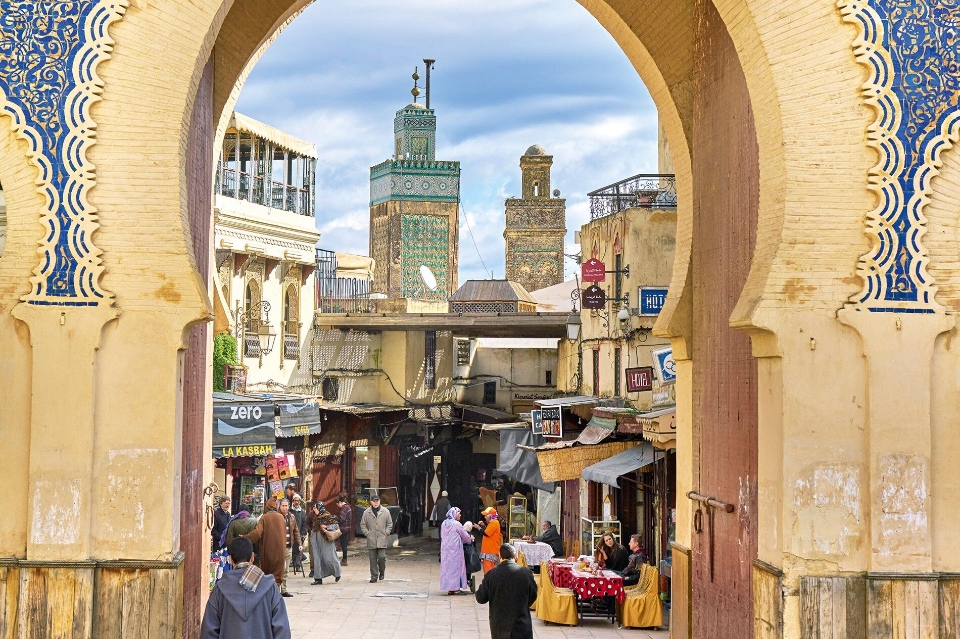
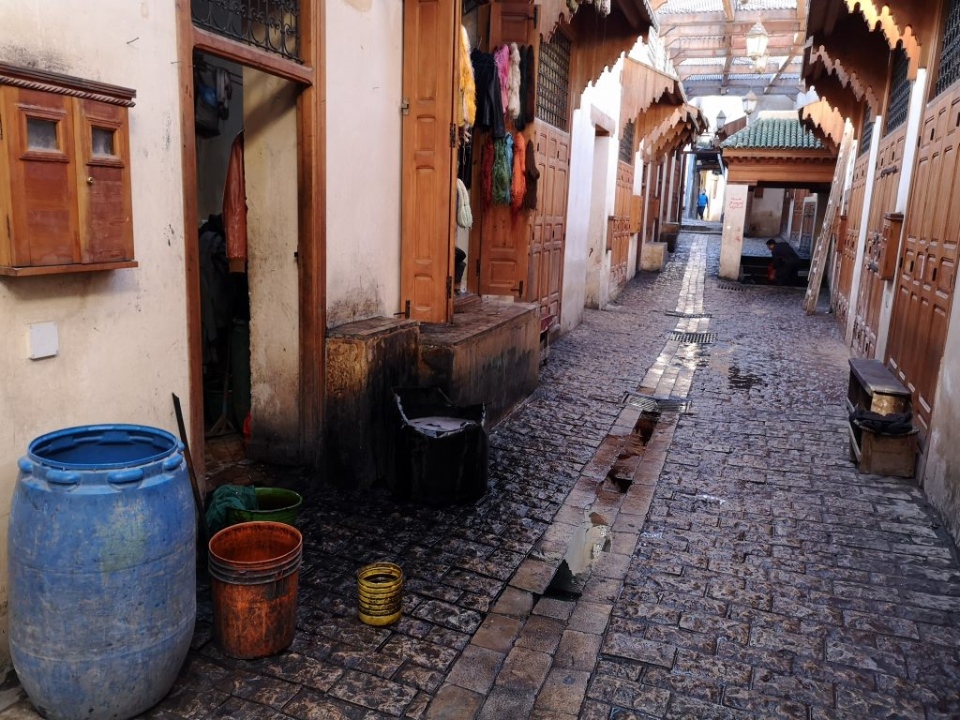
Surrounded by city walls, Fès el-Bali is truly an open-air museum that houses countless masterpieces of Morocco located in a maze of 9400 road and alleys. When you come here, you will feel like you are lost in Fès of the past, lost in a colorful Arab world, and see firsthand the bustling trading activities of Muslims here from centuries past.
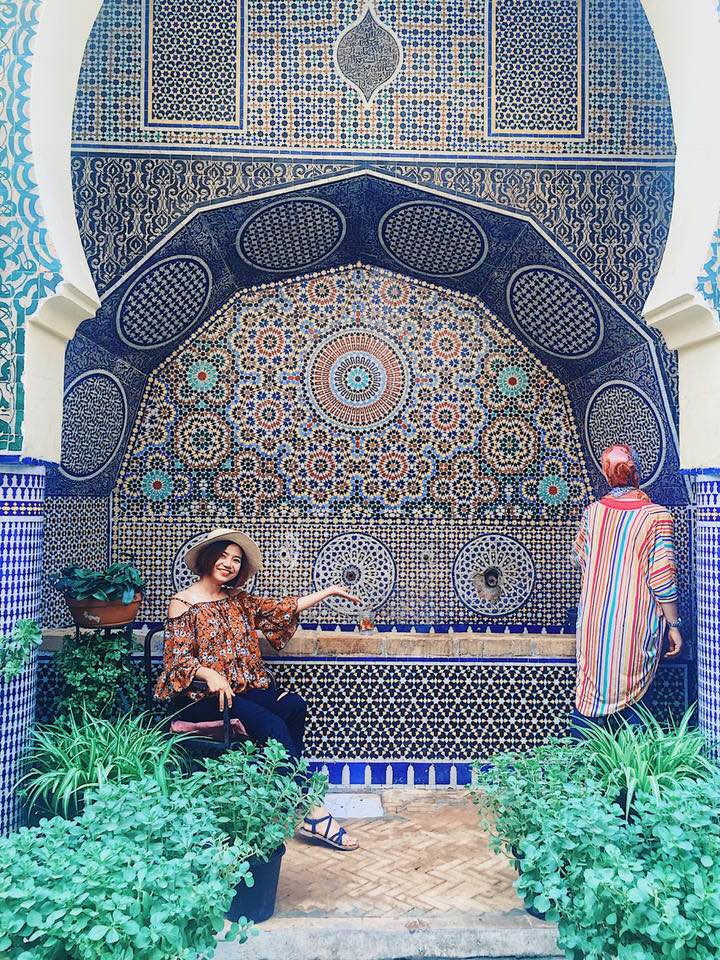
How to get to Fez? (#fez blog)
There are many ways to get to Fez. Traveling by train is a good option, and Fez station has routes to some of the country’s most popular cities, such as Tangier, Marrakesh, Casablanca and Rabat. You do not need to book tickets in advance.
In addition, you can getting to Fez by air if you depart from other cities in the world. The Fez Airport – Aeroport Fez Saiss is about 13km and after arriving you can catch the bus number 16 to getting to the city center which runs until 7pm and it takes around 30 minutes and costs around MAD 4 – MAD 280/trip.
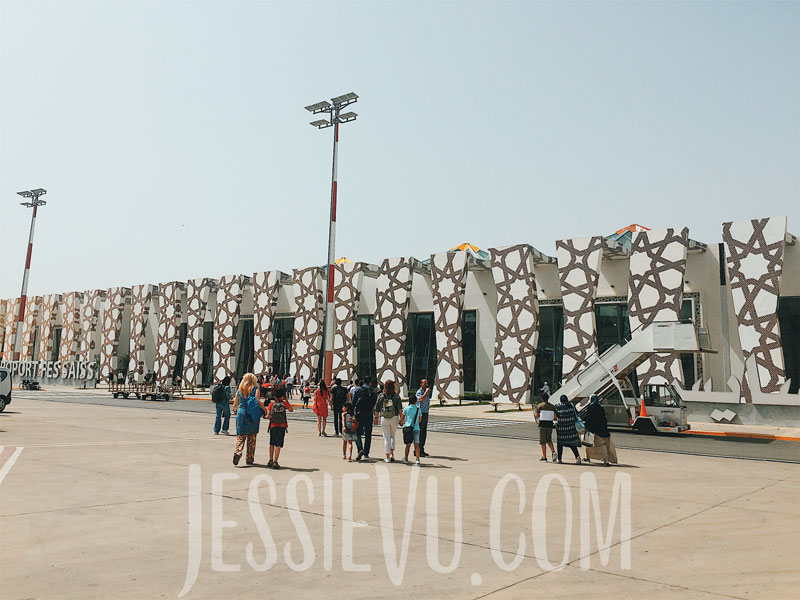
Getting around Fes (#fez travel guide)
Once in Fez, the best way to explore the city is on foot, especially due to its medina bans vehicles entirely. Outside the Medina, you can take a small petit-taxi, small red cars that act like taxis in Vietnam.

Make sure your driver turns on the digital meter, or the two parties have agreed on a price in advance from the moment you board the car. If you have a lot of luggage, your bag will probably be tied on the roof of the car. In the Medina area there is a luggage push service, but remember to tip the person pushing your luggage for you.
In the Medina, hire a guide to smoothly navigate the maze-like old streets. Have a camera ready to capture the medieval breath, and bring some money to shop for local crafts.
What to do and where to go in Fes? (#fes travel guide)
Medina (#fes travel guide)
Medina is the old town surrounded by walls. In Morocco, each city has its own medinas found from hundreds to thousands of years ago. This is a place to live and work, souks (traditional markets) to exchange and buy local products, unique handicraft areas were formed in this area and are divided into areas such as wood carving, tannery, wares, bronze goods…
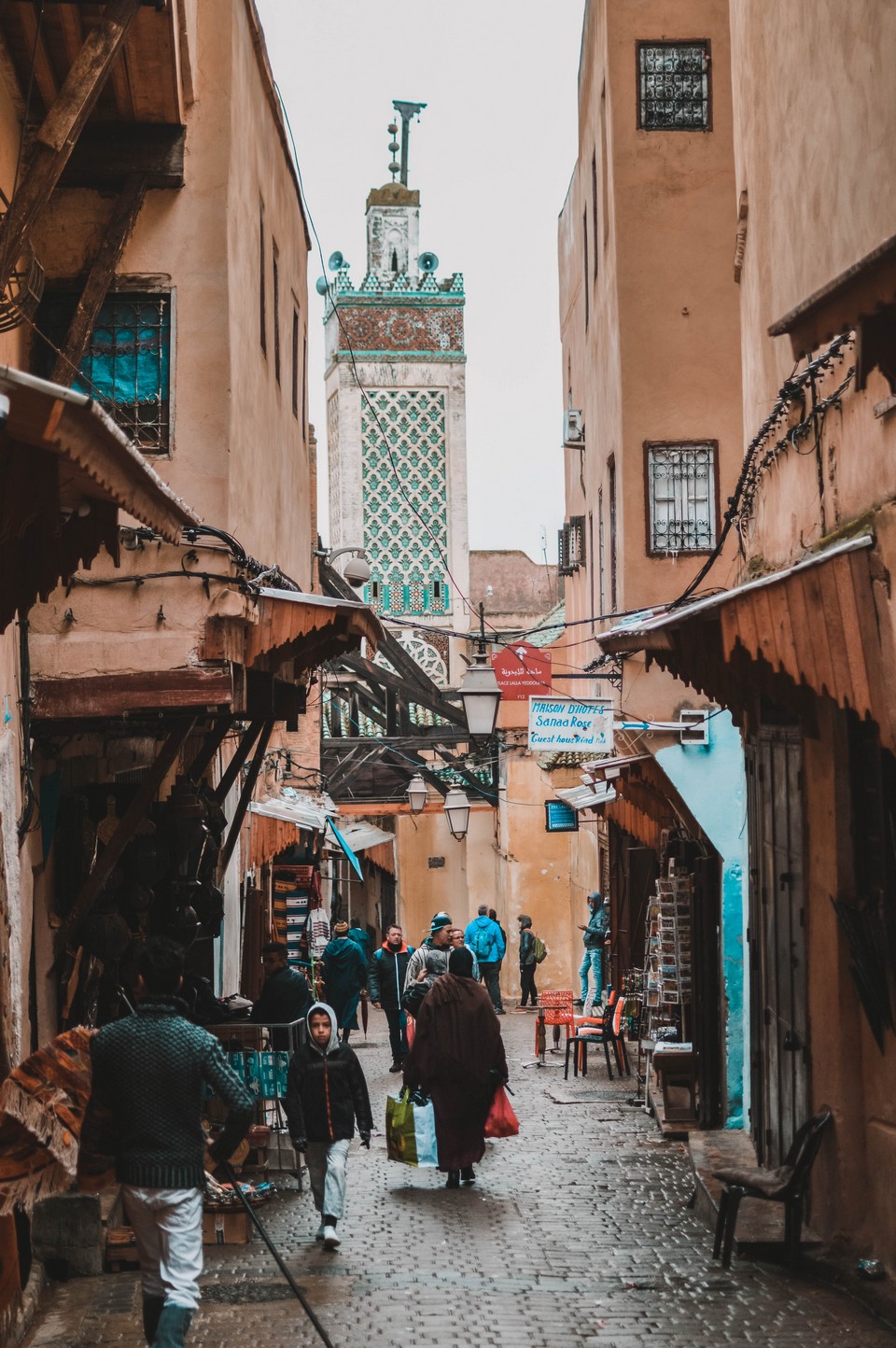
In Fes, it is much easier if you have a guide because not only will they give directions, but they will share a lot of interesting information about the unique medina with 9,000 large and small streets, lanes and alleys. If you go by yourself, just let your footsteps guide the way and look to the sun to find your way out like so many people in Fes do.
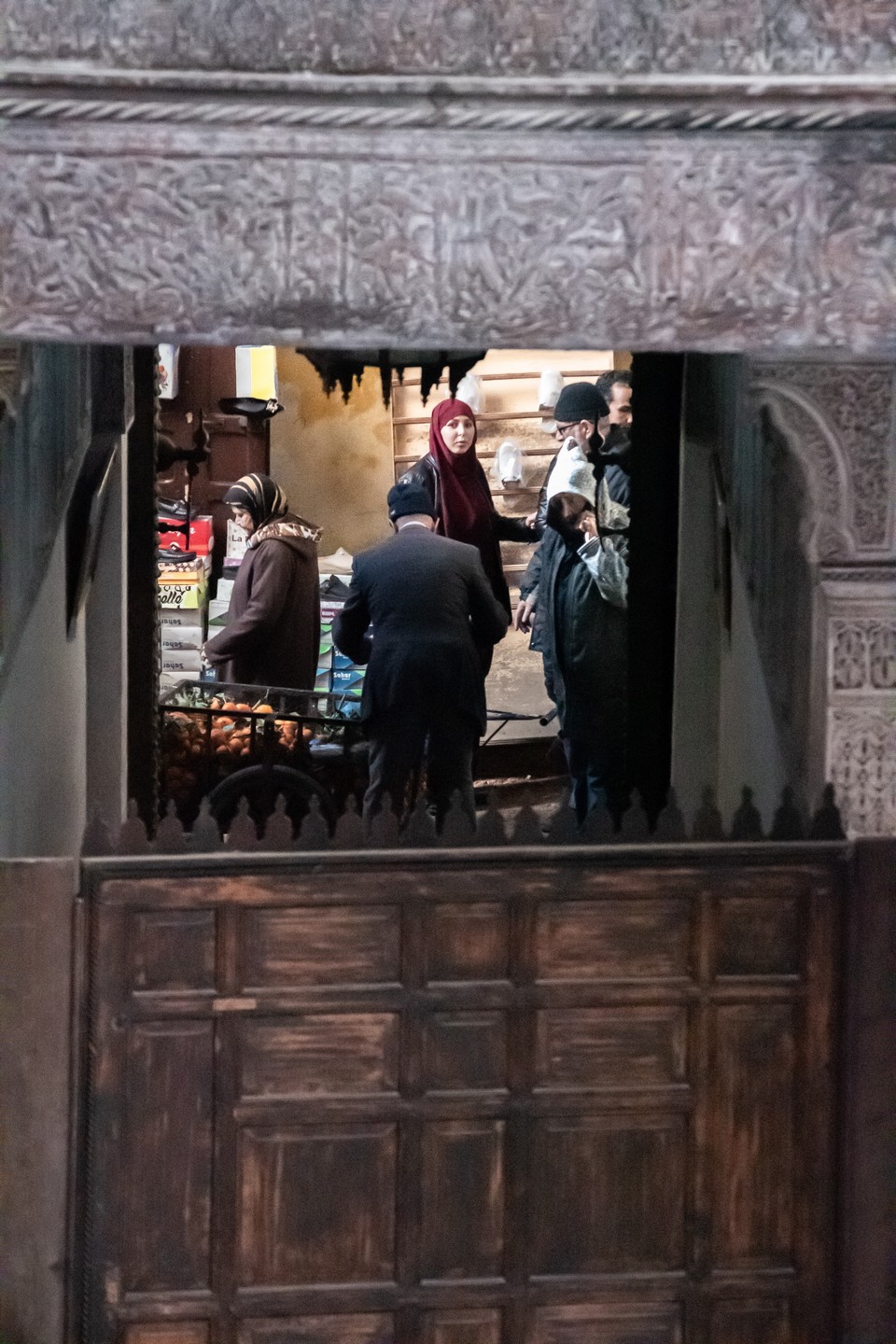
It is said that if you want to understand a culture, go to the market because that place most clearly reflects everything such as lifestyle, people, costumes, food… Fes el Bali (Old Fes) is therefore always a popular destination. This ancient market was recognized as a World Heritage Site in 1981 for any visitor. Of course, don’t say you’ve been to Fes if you’ve never been lost in its Medina.
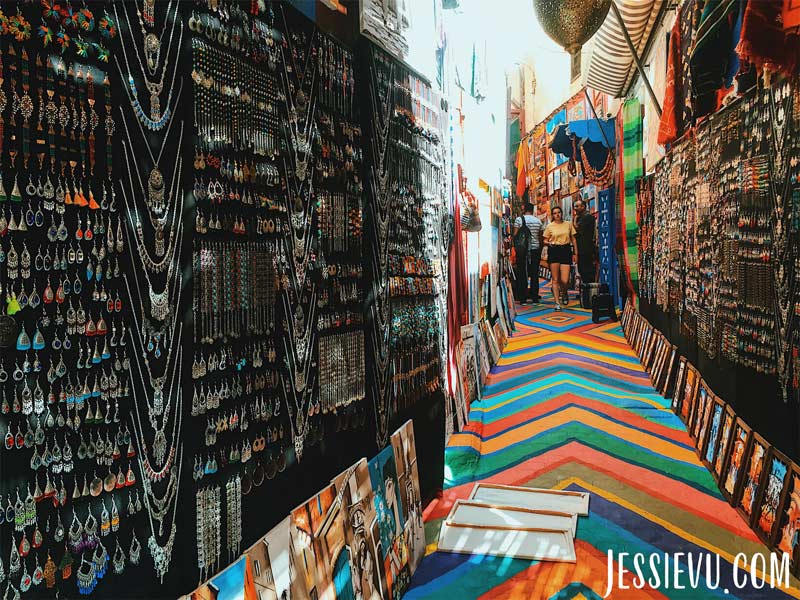
This old town hidden within the high walls of the city is not for the faint-hearted, everywhere is full of people: bustling conversation in Arabic, or inviting you in to buy goods, or smashing with a hammer. Welding pieces of metal to make copper pots, silver teacups, or pushing a cart of melons for sale and weighing melons with a scale that probably dates back to ancient times, or sitting quietly weaving rugs in a dark room is also a rug shop that if you walk in, they won’t even look up.
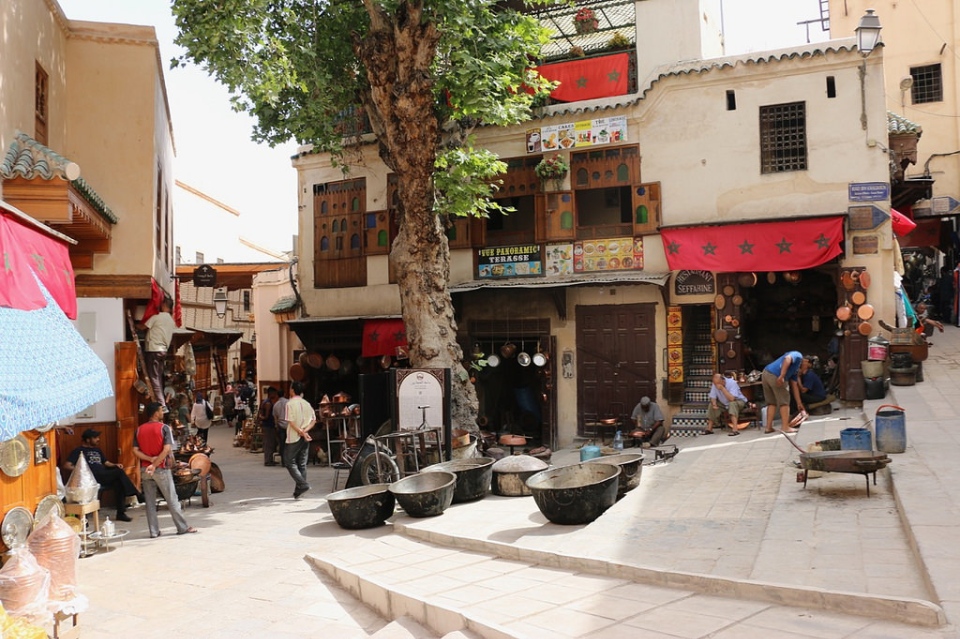
Medina is divided into several areas specializing in selling food, crafts or clothing. Along the wall one can also turn it into a shoe shop with a few wooden shelves or a jewelry counter hanging on a black cloth or even a rug stall. Many paths pass through the ancient brick dome, on which are windows that are only slightly larger than a textbook. The atmosphere is reminiscent of the small alleys in the heart of Hanoi’s old quarter, but the scent is different.
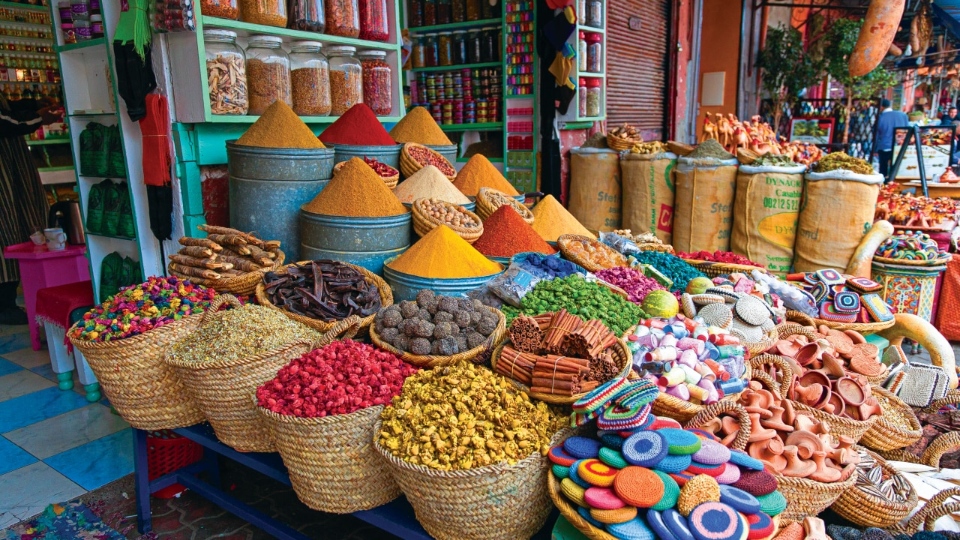
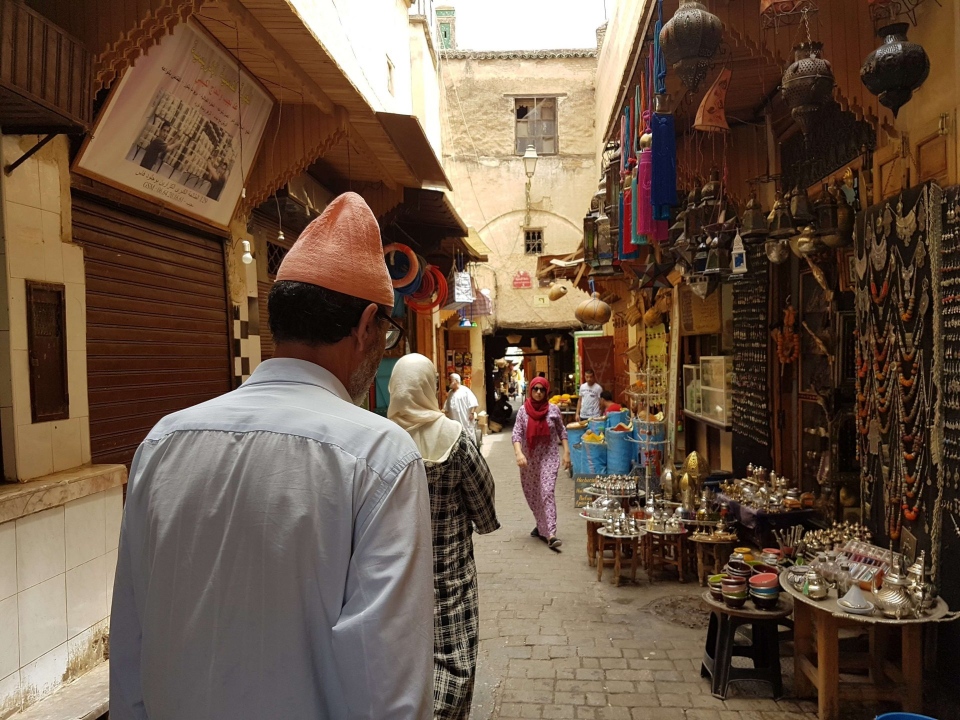
You will smell a little anise, cinnamon, incense, the smell of “taxis” – nicknames for donkeys and horses, the only “vehicle” that can be traveled in the heart of the medina. There are no motorbikes, bicycles and of course cars because many of the paths can only fit one body. Not to mention that on top is the system of clotheslines or wooden oars supporting the hundred-year-old houses that make you feel something suffocating, uncomfortable but irresistible when the footsteps keep coming with a strong invisible force. The sound of whispering, bustling, or resonant sounds of market-goers, delivery people, sellers and buyers swirled in the ears of distant guests like a mess in the hot sun.
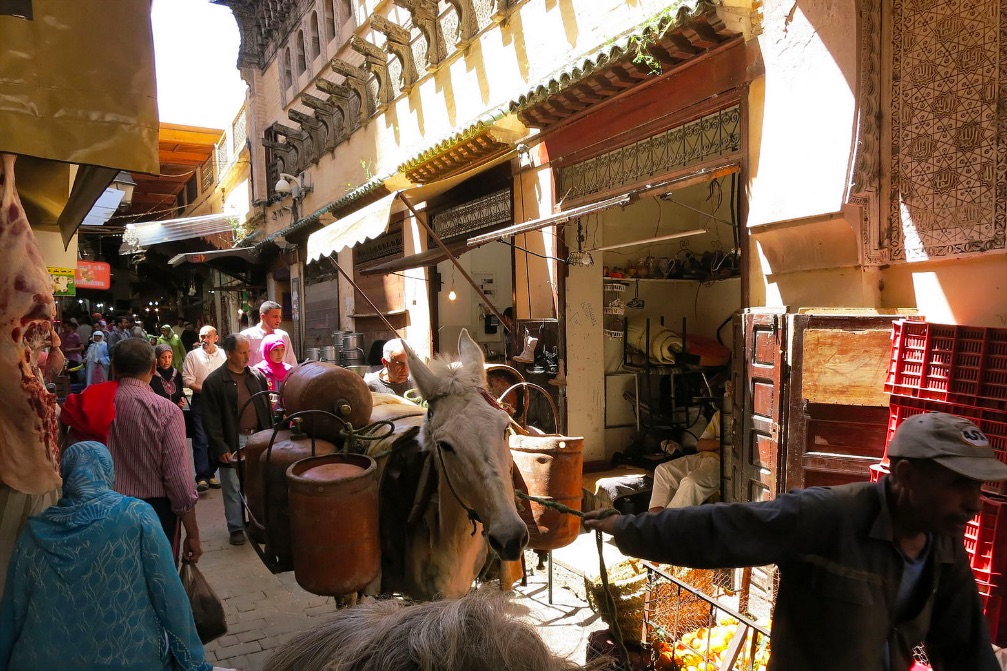
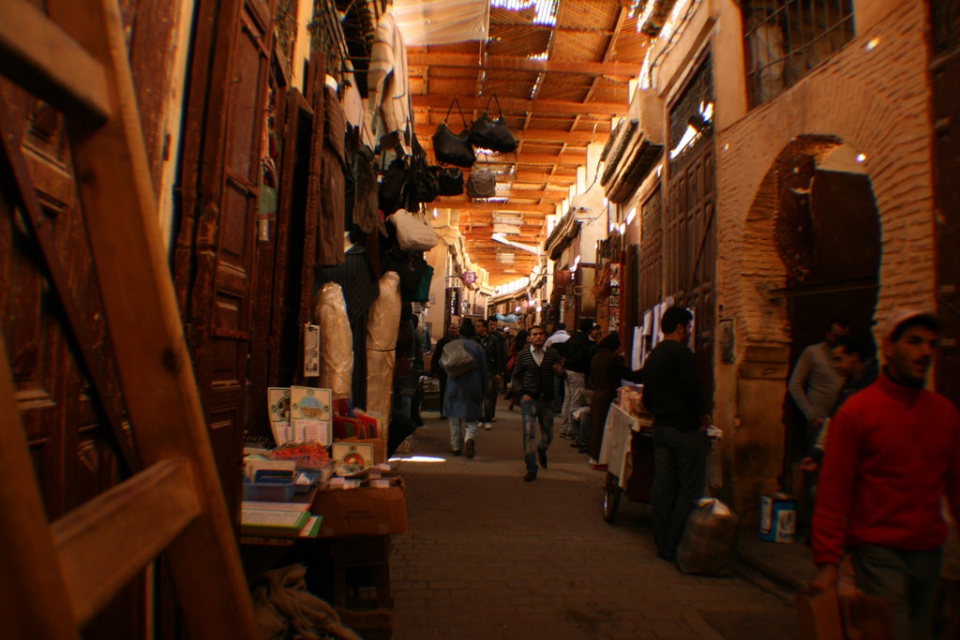
Following in the footsteps of pack donkeys, patiently and slowly, you will find artisan tanneries full of colors and unforgettable scents. If you go with a guide, they will quickly take you through the narrow streets and reach the tannery alley in a few minutes.

Tannery appears quite a lot in impressive postcards about Morocco. The city of Fes owns the oldest tanneries in the world, dating back to the 9th century. First impressions will come from your sense of smell, not visual images. As soon as he entered a leather goods store, the staff quickly gave each visitor a sprig of mint to smell.

The smell of fresh mint leaves helps to dispel the stench that is spreading, which seems to be getting stronger time by time. There are quite a few leather shops surrounding the tanneries and they have a terrace for visitors to look at and take pictures. This activity has been going on continuously since the 11th century when leather goods made from Fes became famous.

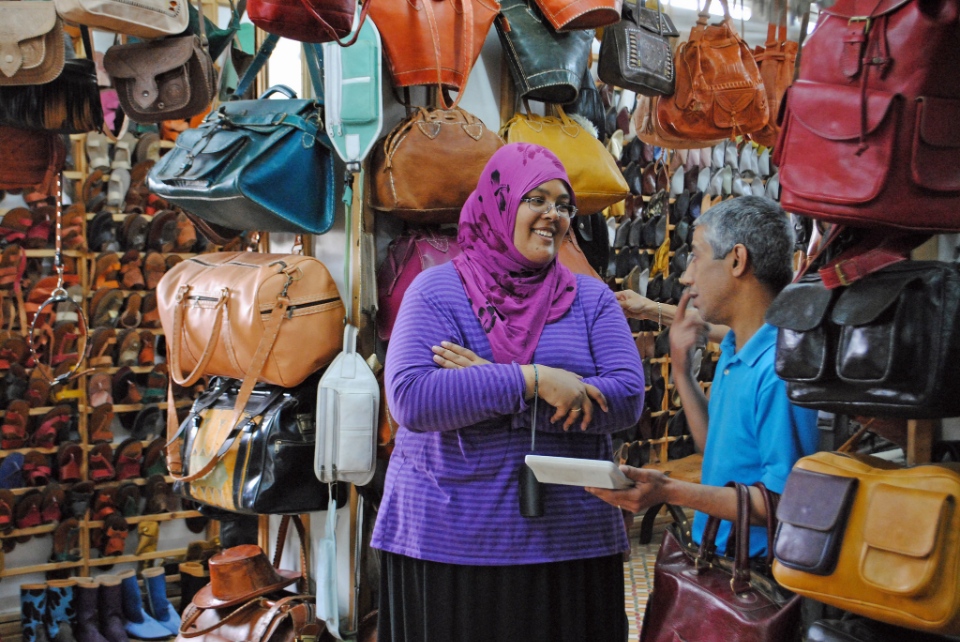
This city of forgotten time is a true Islamic mecca with 365 mosques of Islam. With a green dome and a ghastly call to prayer a few times a day, there’s a university founded by a woman who doesn’t have an equal footing with men in the Islamic world.
The streets and cafes in city of Fes were filled with men everywhere. Women only see outside the grocery store, or home goods store, they are always in a hurry and never stop. The men are leisurely in the shops, with a cup of coffee or mint tea and chatting with friends. The patriarchal culture is clearly visible here.
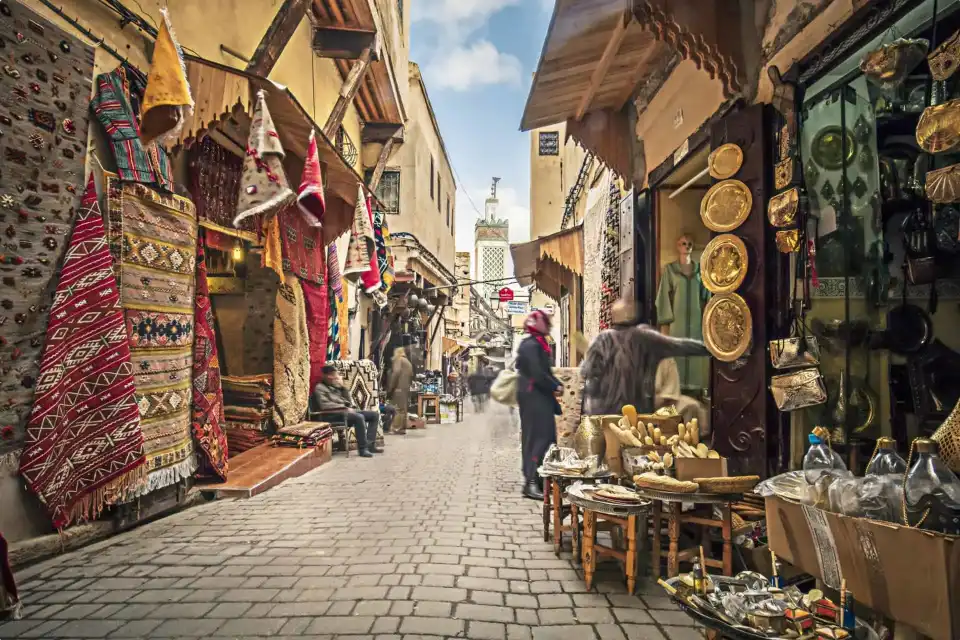
With an unmistakable ancient beauty, Fes is also a paradise for Muslims. Fes is chosen as the venue for the Fes Festival of Sacred Music every June. This national festival is like a modern touch in the heart of the ancient city of Fes. This is also the most attractive time for Moroccan tourists, because visitors are always curious about how special a Fes filled with light and music will be.
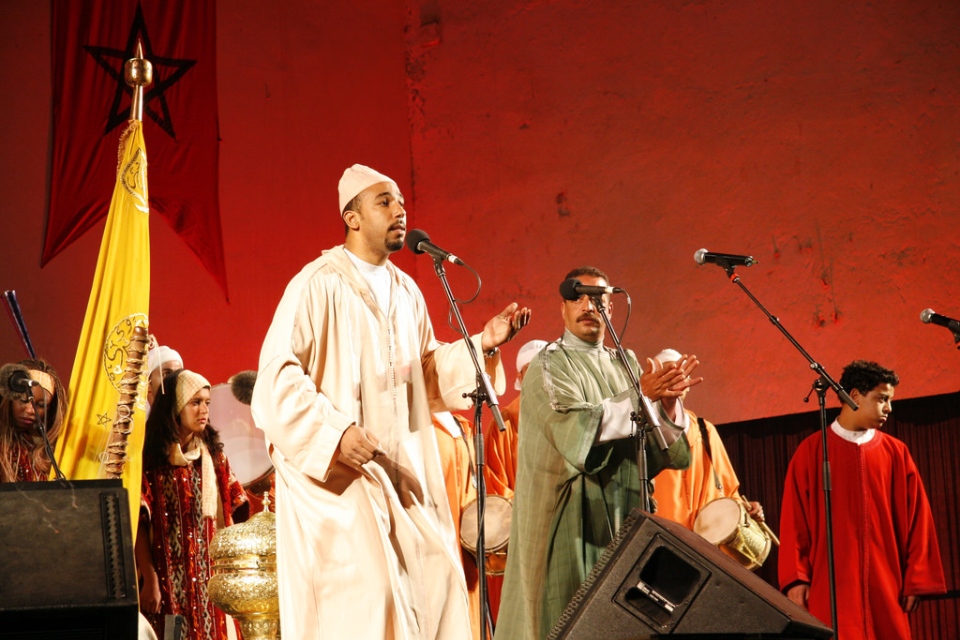
If you are not Muslim, you will not be able to enter the mosques of this religion. Visitors can only visit the madrasa buildings or the Koran school.
Bab Bou Jeloud (#fes blog)
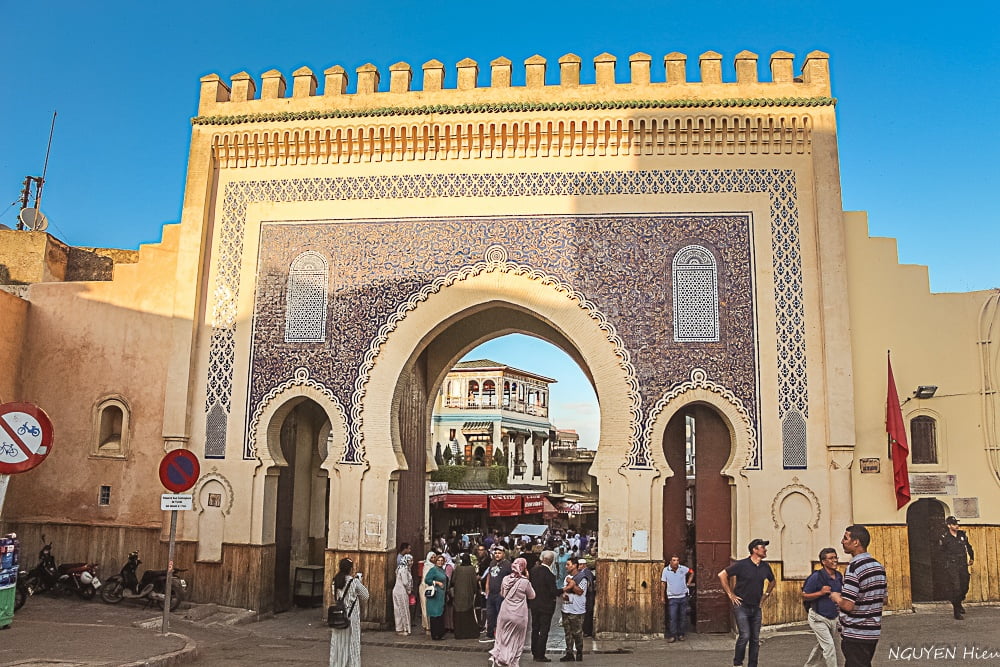
When you plan to visit Fès el-Bali, probably the first place you come across is Bab Bou Jeloud (or Bab Boujloud). This is the main gate to the medina and is also the most famous of the many gates of the medina.
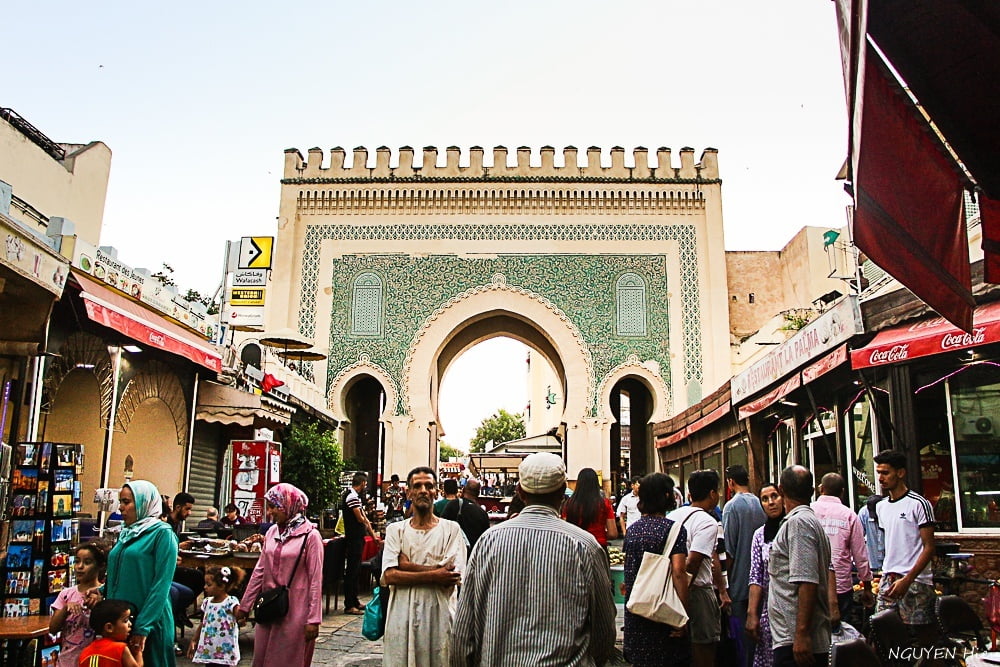

Built in the 12th century and recently renovated in 2013, this is a Moroccan gate with thousands of blue stones inlaid on both sides. The outside is inlaid with blue stones (the color of Fès) and the inside of the gate is inlaid with green stones (the color of Islam), it is because of this feature that Bab Bou Jeloud is also called by the name Bab Bou Jeloud. another name is “Blue Gate”.
Souks (#fes travel blog)

Souks (traditional markets) are spread throughout the medina with countless stalls selling famous local crafts and products. Get lost here, you will see rugs with all the eye-catching motifs and patterns of Tillis souk, traditional fragrant trays of Attarine souk, or stalls selling cosmetics and henna painting at el-Henna souk… and a lot of stalls selling traditional Moroccan clothes and shoes, and lots of dried fruit stalls…
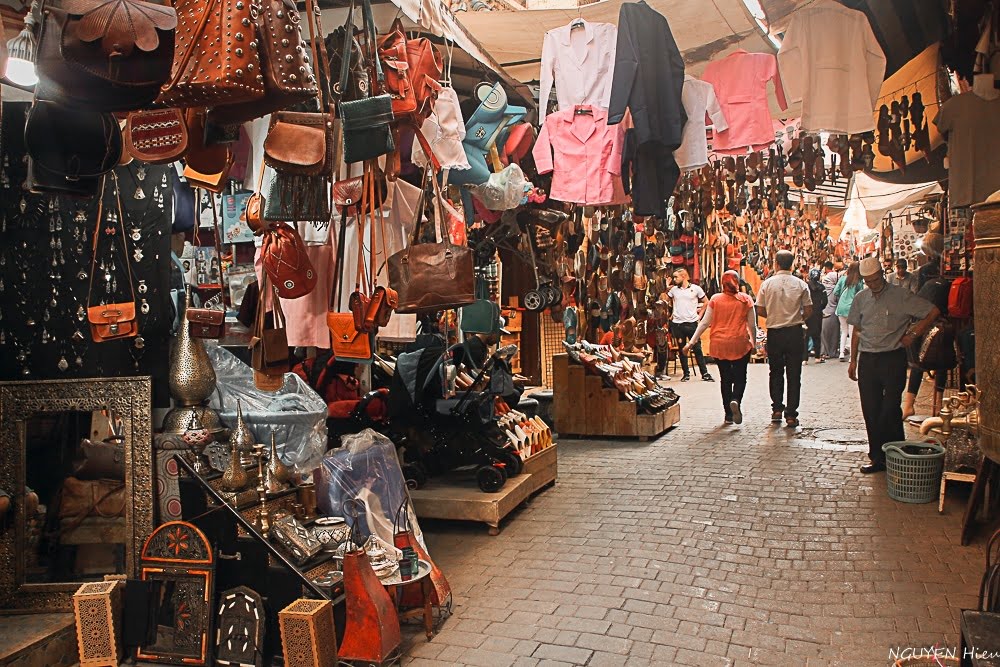

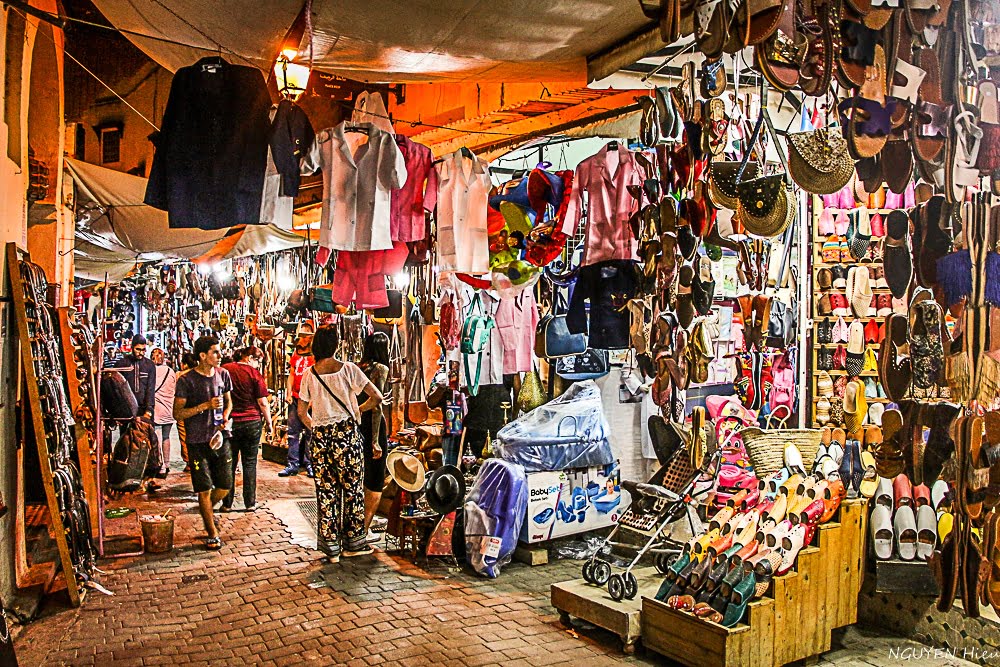
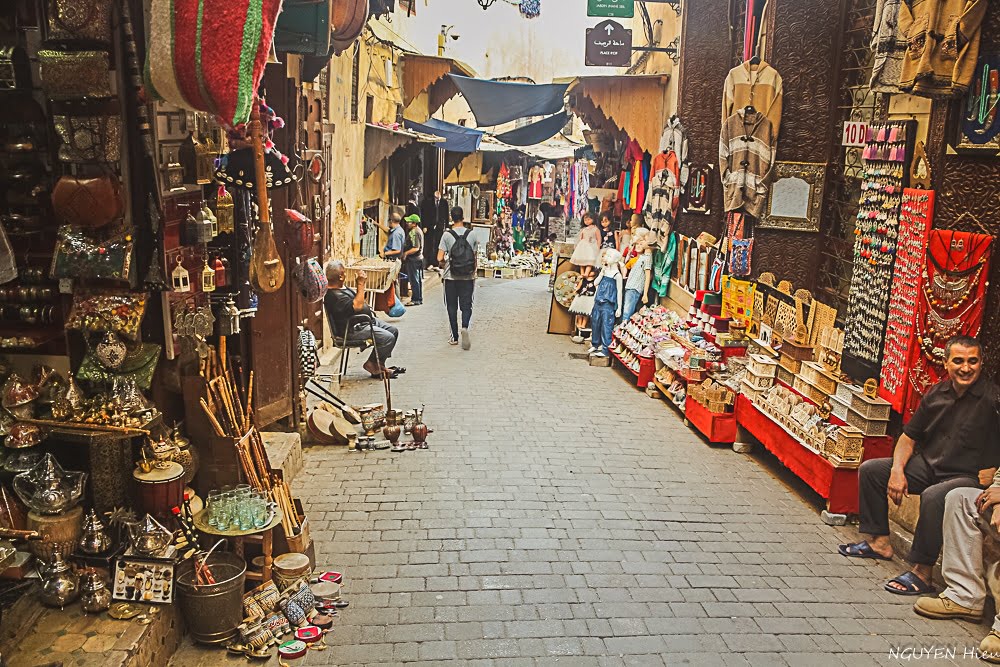
When you have bought yourself the items you like at these markets, do not miss the opportunity to enjoy some typical Moroccan cakes with a glass of orange or pomegranate juice here.
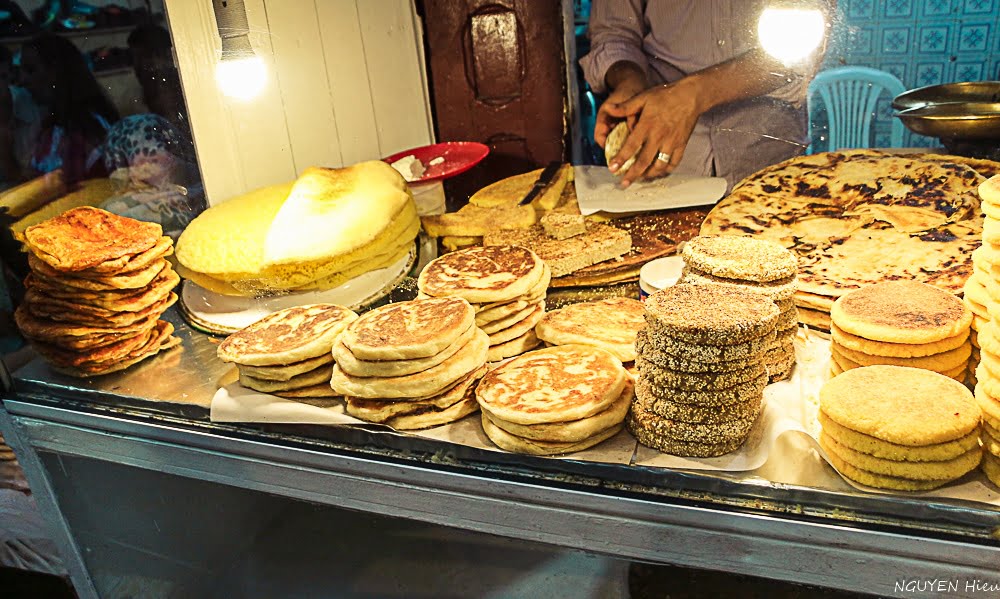
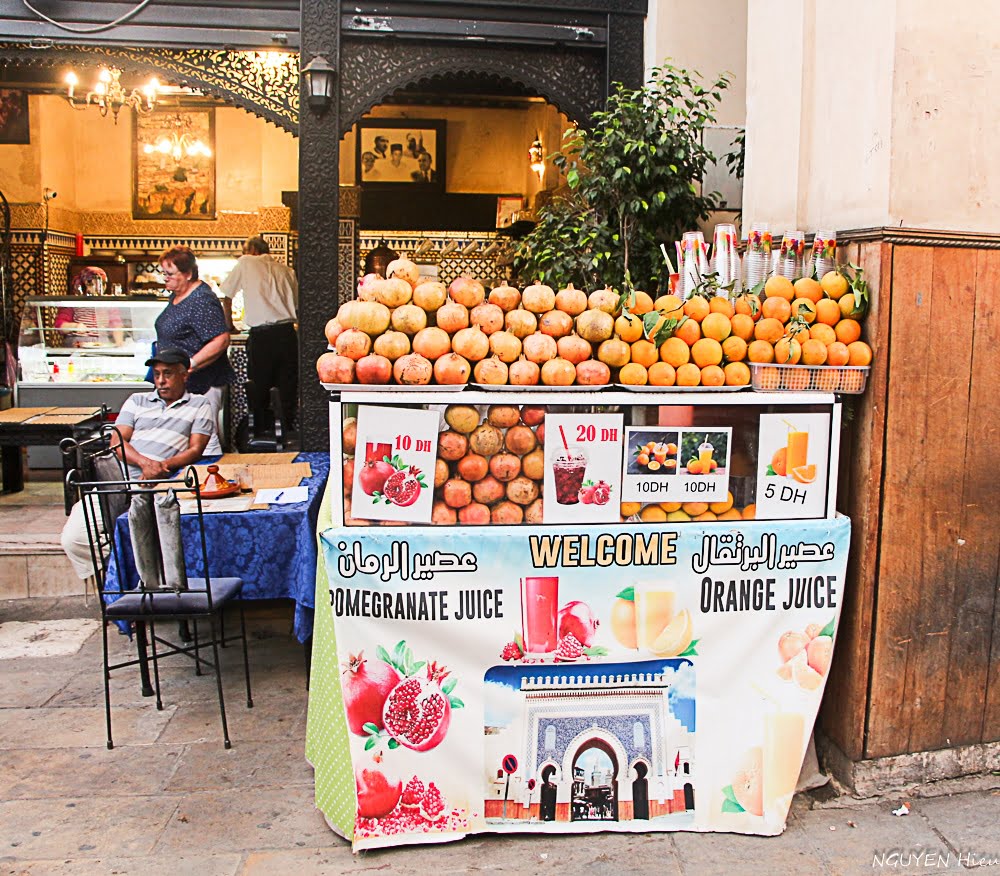

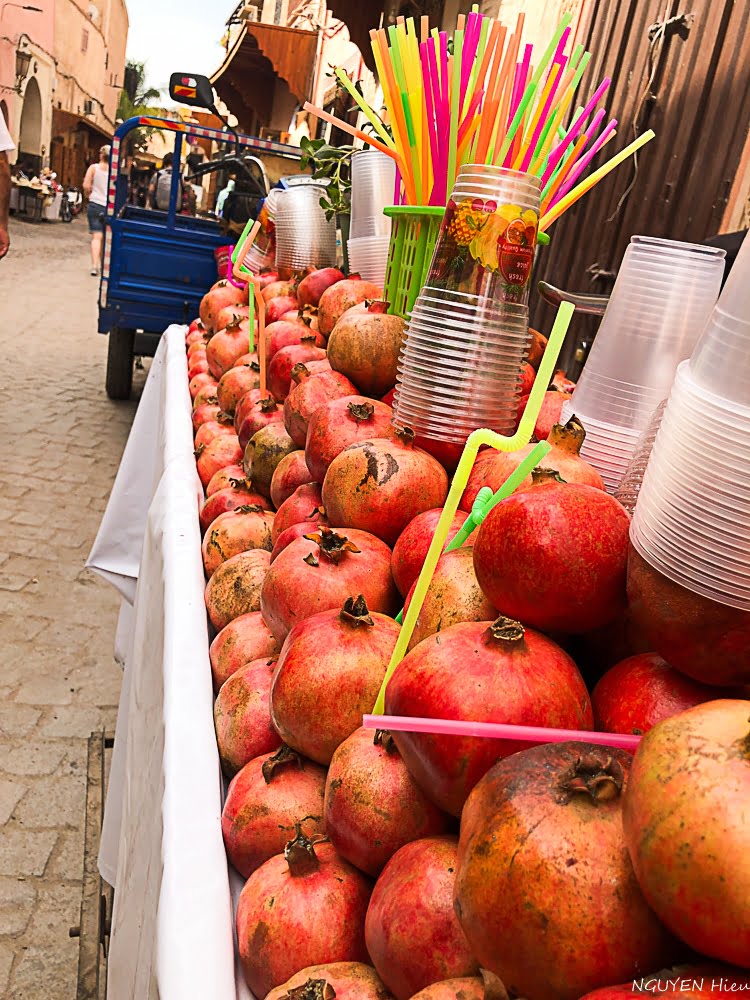































![10 best airports in Asia in 2016 [RANKED] kuala-lumpur-international-airport-best airports in asia in 2016 by skytrax ratings](https://livingnomads.com/wp-content/uploads/2016/08/29/kuala-lumpur-international-airport-best-airports-in-asia-in-2016-by-skytrax-ratings-218x150.jpg)








